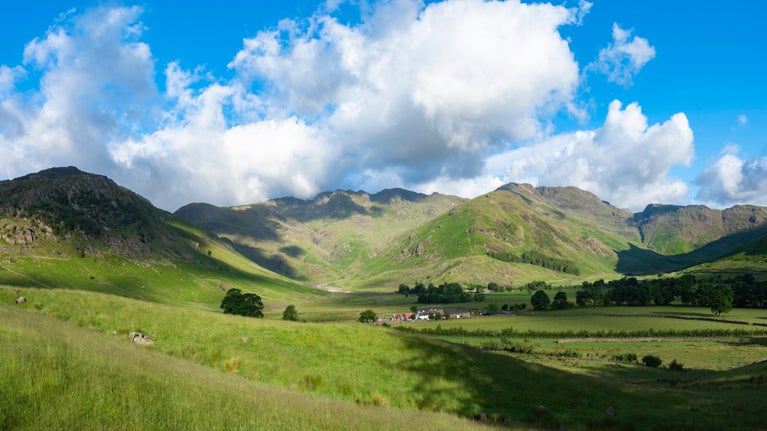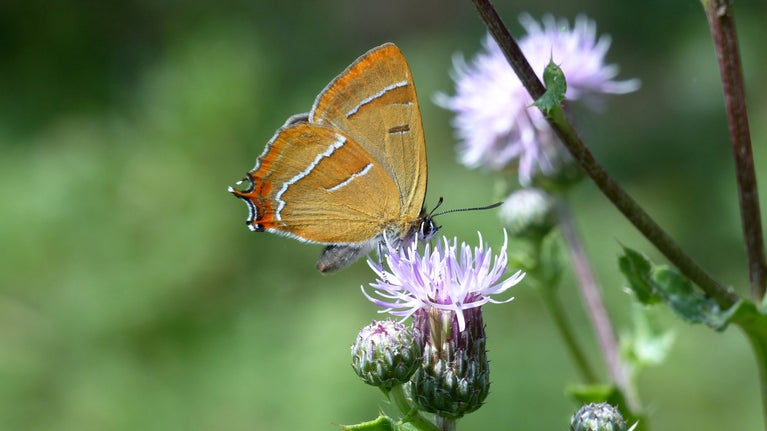
Nature conservation
From ancient trees to bees and butterflies, our places are full of life. We're working hard to safeguard nature for years to come.

One of the main aims of the Buscot and Coleshill: Nature's Estate project is to help nature recover and thrive, both across the estate and throughout the river catchments in the wider region. We’ll restore a variety of wildlife habitats, support farmers in moving towards more sustainable practices and work with the local community to closely monitor the results of these changes.
Every type of habitat is home to a different community of plants, insects and animals. That’s why we’ll be working to restore as wide a range of habitats as possible.
We’ll also reconnect fragmented habitats, allowing nature to travel and expand and creating joined up spaces that can support more sustainable populations of wildlife.
On the Buscot and Coleshill estate, we’ll create new wooded spaces, including farm forestry, dense woodland and dappled glades. We’ll use traditional management techniques to establish a network of varied hedgerow habitats that link up across the landscape.
By encouraging the natural processes of the land, and supporting farmers in moving to regenerative practices, we’ll restore a range of other valuable habitats, including meadows, wood pasture, scrub and several types of grassland.
We’ll also continue our work to repair the natural shape and processes of the wet features of the landscape, particularly the stretch of the River Cole that runs through the estate, creating wildlife habitats like ponds, reedbeds and floodplain grasslands.
Some of our most important work will involve collaborating with partners to restore habitats and bring back wildlife to rivers and wetlands across the wider catchments of the River Cole and the River Thames in the region.
We’ll help farmers to move towards nature-friendly practices that will reduce the runoff of sediment and harmful chemicals into the rivers. And with their support, we’ll create a variety of different wetland habitats – sometimes known as a ‘wetland mosaic’ – that will act as ‘stepping stones’ for wildlife.
We’ll also tackle invasive species like American mink that threaten our native species.
Together, these changes will create a ‘blue corridor’ of connected habitats that will allow wetland species of plants, mammals and birds to recover and thrive.
These are just some of the many nature habitats we'll focus on restoring.
There’s a long tradition of innovative farming at Buscot and Coleshill. We want to support the tenant farmers here to continue moving towards practices that will be sustainable both for nature and their businesses.
We’ll help farmers to access funding to create or extend habitats like grasslands, woodlands, wetlands and hedgerows, and to adapt their farming systems to include areas planted with food for birds or left uncultivated to allow ground-nesting species time to breed.
We’ll also encourage farmers to graze livestock in a way that shapes important habitats, or to manage their crops and soils sustainably.
And we’ll help them transition to regenerative processes that will improve the health of their soil, as well as neighbouring habitats and rivers: using fewer chemical fertilisers and insecticides, reducing ploughing, planting mixed crops and growing cover crops between harvests.
We’ll know that the changes we’ve made are starting to take effect as we see an increase in the variety and numbers of insects, plants and other wildlife in the area.
Recording and monitoring these numbers is an important part of our work, and we’ve already begun, supported by a growing community of volunteers.
We’ve started initial baseline surveys across the estate – particularly in the areas where we’re planning to make changes – to record the state of the habitats and to see which species are currently there and in what numbers.
We carry out regular bird and butterfly surveys, contributing to national monitoring schemes, and currently have two audio monitors on the estate that continuously record and identify bird species by their songs.
We also regularly monitor some of our rarest species, such as water voles, often working in partnership with other organisations like the local Wildlife Trust and Freshwater Habitat Trust.
An increase in some of these key species will be a good indication that our work is having a positive impact.
One of the main ways we’ll measure the progress we’re making is by focusing on specific key species.
These species have been chosen because they’re good indicators of the health of the different habitats we’re trying to restore. Most of them are rare and under threat so increasing their numbers is really important.
Our indicator species across the Buscot and Coleshill estate include:
Our river and wetland indicator species across the Cole and regional Thames catchment areas include:

From ancient trees to bees and butterflies, our places are full of life. We're working hard to safeguard nature for years to come.
The State of Nature report for 2023 shows that the abundance of species in the UK has declined by 19 per cent on average since records began in 1970. But while the most important natural habitats are in poor condition, work to protect landscapes and support wildlife has clear benefits for nature, people and the climate.

Learn more about our views on protecting and conserving nature and wildlife, our own environmental targets, and our position on issues including trail hunting and shooting.

Find out how we're working with farmers to investigate new, practical ways of improving farming methods to benefit farmers, nature and the environment.

Find out how Coleshill in Oxfordshire went from pioneering modern farming to become the British resistance HQ in WW2.
